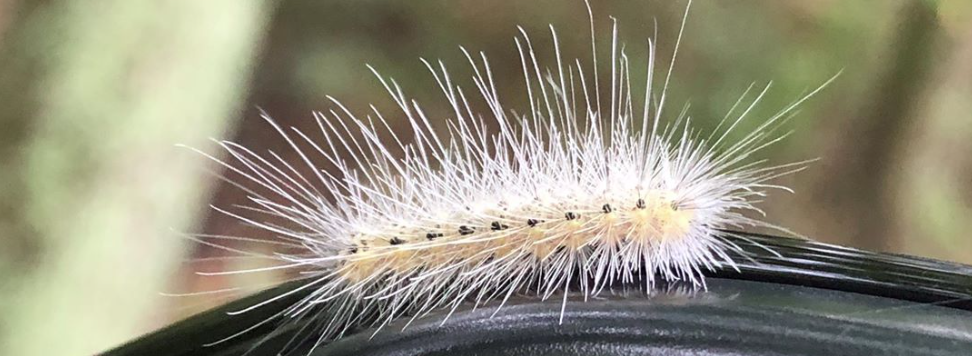Nature’s Spooky Trees
NATURE SERVES UP MORE THAN CRISP FALL LEAVES FOR HALLOWEEN!
It’s fall! The weather suddenly cooled, and fall is here! In between sipping pumpkin lattes and pumpkin patching, you may have noticed some changes in the trees – more than just the standard fall leaf colors and leaf drop. I’m talking about the webbing that pops up every fall in tree canopies. Who is responsible for this mysterious, spooky (and seasonal!) tree décor? It’s none other than the fall webworm.
Fall webworms themselves aren’t very striking in appearance, but they are showstoppers when it comes to their nest. Some even get be two to three feet in size!
Nondescript, white moths (the adult stage) emerge in summer, after overwintering under debris in a cocoon, and females begin laying eggs on leaves. Eggs hatch in about a week. The larvae are small-ish, fuzzy caterpillars, about an inch in length. Over 100 common landscape trees have been documented as host plants, but they seem to prefer black walnut, ash, hickories, and oak. The caterpillars live in a colony…a colony that weaves a beautiful web!
The caterpillars eventually eat all the leaves in the safety of their web and have been known to wander out at night time for feeding if the nest is barren. Eventually the caterpillars mature and pupate in the fall, starting the cycle over again.
No need to worry about damage to the tree. Even though some webs are large, the fall webworm rarely kills a tree. But, of course, the aesthetics of the tree will be impacted, and maybe that’s not such a bad thing…depending on how big a fan you are of creepy, ghostly things.
It’s probably a little late in the year to find any active fall webworms at this time, but their webs should persist through Halloween; think of it as mother nature’s spin on seasonal decor!
Share This Post







